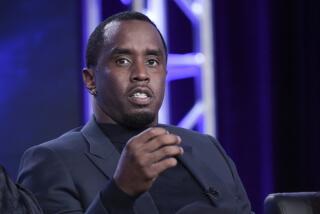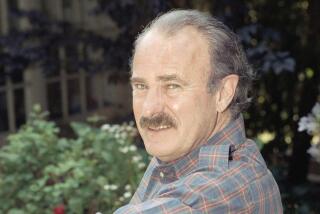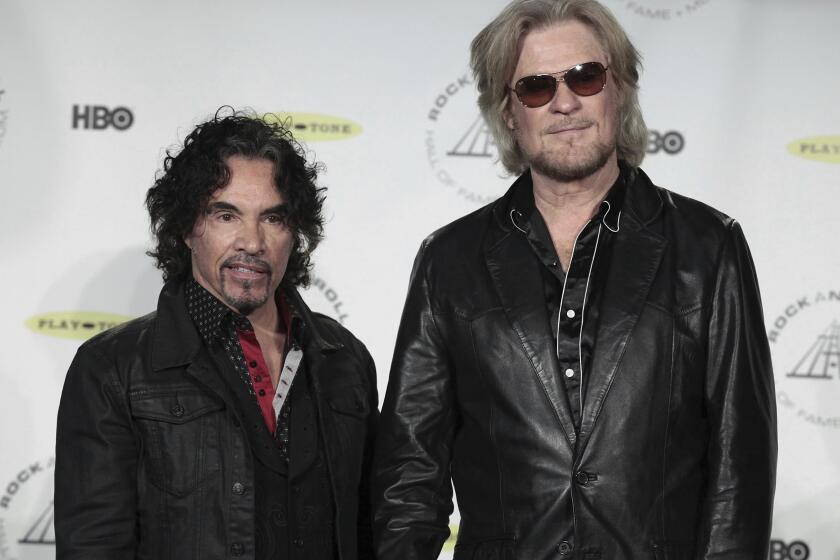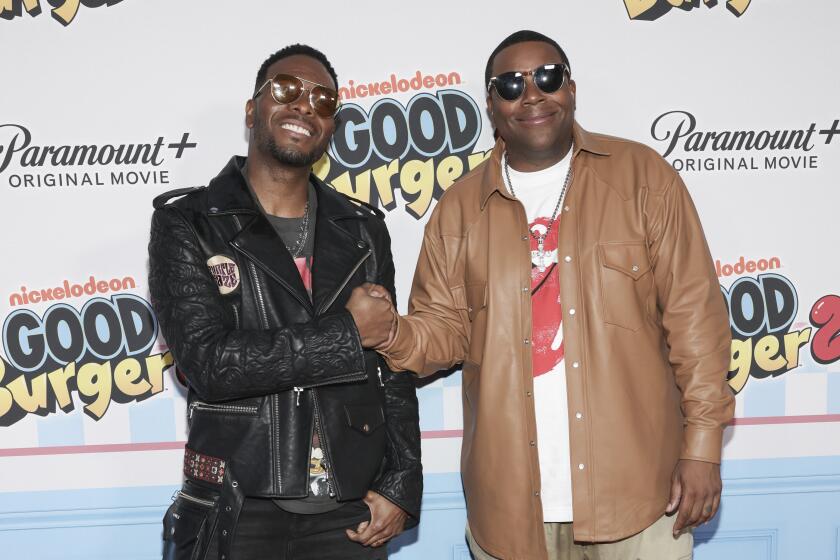Metheny, Mehldau and that elusive melding point
Call it an odd coupling: pianist Brad Mehldau and guitarist Pat Metheny. Yet there they were at Walt Disney Hall on Saturday night, the classically oriented Mehldau and the wildly eclectic Metheny, each with a very different perception of jazz but eager to find common ground.
There’s nothing wrong with odd coupling, or with odd couples, of course. Neil Simon made a fortune out of the juxtaposition of Felix’s compulsive orderliness and Oscar’s let-it-all-hang-out lifestyle. And in some respects, there was a similar quality about the interaction between Mehldau’s precisely controlled soloing and Metheny’s casual shifts across stylistic genres.
Most of the material traced to the two recordings they have made together -- last year’s “Metheny/Mehldau” and the just-released “Metheny Mehldau Quartet.” The set opened, appropriately, with the duo working in tandem, and the initial selection -- “Unrequited,” with its floating guitar melody and turbulent piano underpinning -- suggested a potentially intriguing musical encounter. But the compatibility diminished, as it would throughout most of the program, when each player dug into his individual solos. Nor were the Felix and Oscar differences reduced by amplification that tended to diminish Mehldau’s presence and emphasize Metheny’s fusion-guitar-god image (while simultaneously blurring the audibility of the fine points in his melodic phrases).
Metheny’s feature number on his electronic Frankenstein instrument -- the 42-string Pikasso guitar -- verged dangerously close to New Age wallpaper sounds. But it’s hard to argue over the musical inclinations of an artist who has performed successfully with everyone from Ornette Coleman and Joshua Redman to Lee Konitz and Wayne Shorter.
Still, hearing his interaction with Mehldau, it was easier to admire the virtuosity and inventiveness of both players than it was to feel any sense of involvement. Despite the firepower, the talent and the marquee names on the bill, this was a program in which -- unlike Simon’s “The Odd Couple” -- the two disparate elements never found a fully engaging (and engaged) way to interact with each other.
More to Read
The biggest entertainment stories
Get our big stories about Hollywood, film, television, music, arts, culture and more right in your inbox as soon as they publish.
You may occasionally receive promotional content from the Los Angeles Times.






